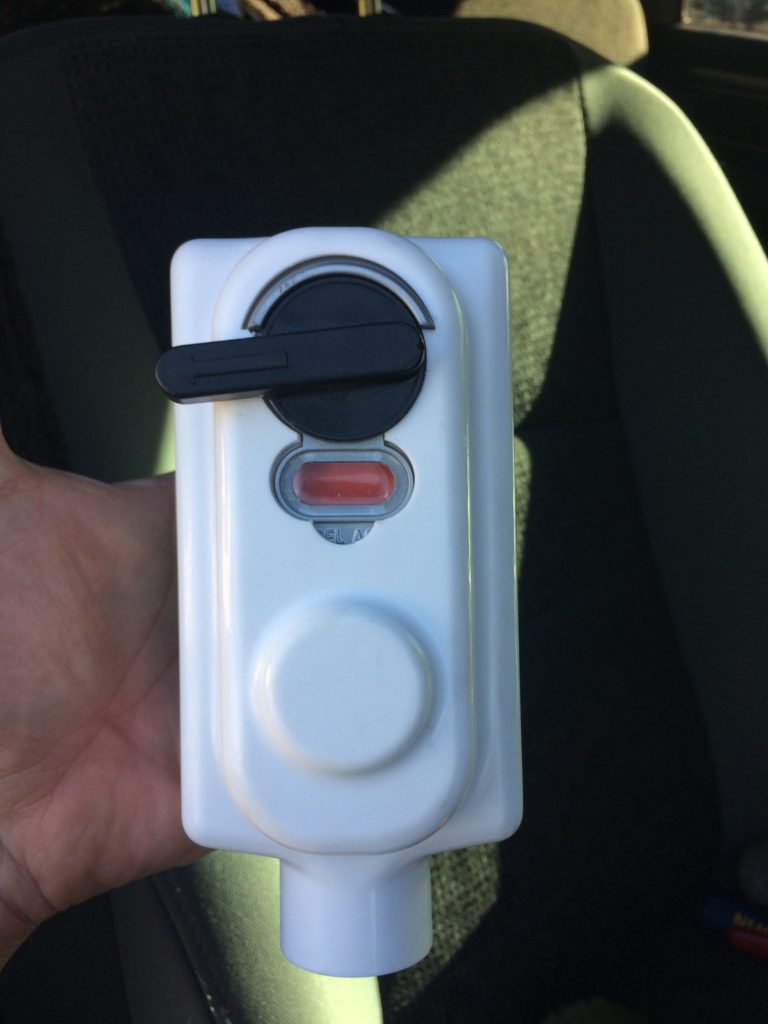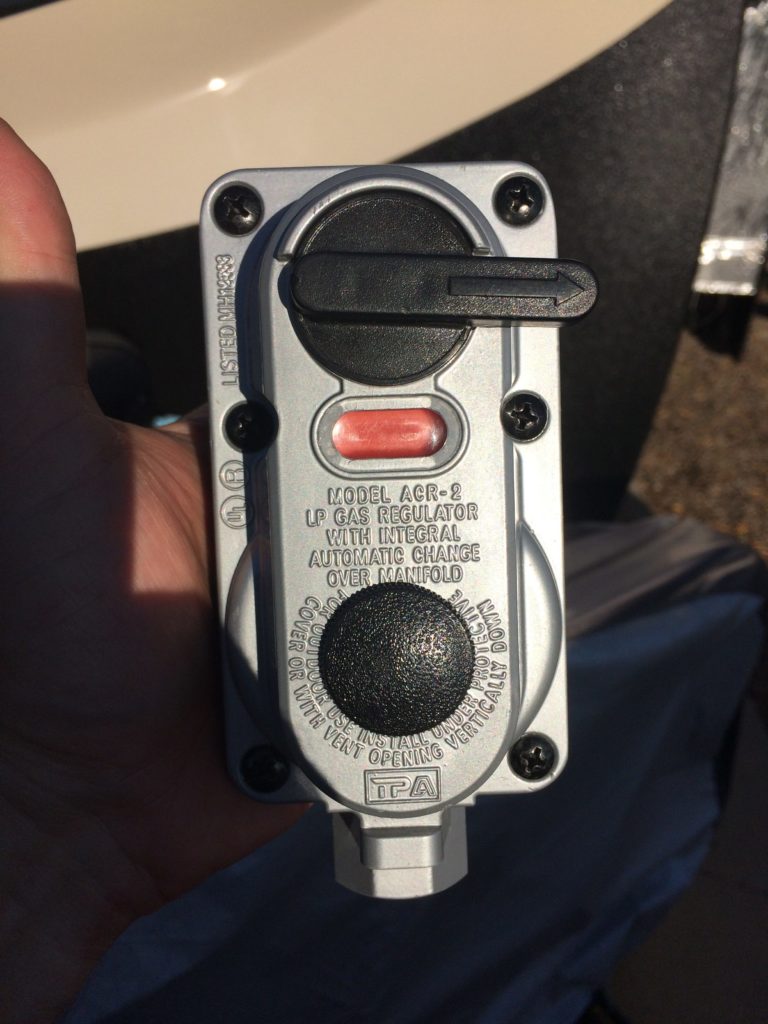I know it’s August and we haven’t had to think about our furnace in months, but winter is just around the corner. It was time to do some maintenance.
Much like moving into a sticks-and-bricks home, there is always something to work on. Last winter we were having periodic issues with our furnace not lighting, especially on the coldest nights. I checked the air intake and exhaust ports to make sure there were no blockages, since bees and wasps like to make their homes there from time to time. The other appliances that use propane fuel (stove, hot water heater, and refrigerators) all worked fine.
The furnace itself is mounted under the kitchen pantry and is not easily accessible.
Thankfully our trailer has an electric fireplace as an additional heat source when the furnace acted up.
The propane (LP) gas system runs off two thirty pound tanks located on the front of the trailer. There is a LP gas regulator that will automatically change over tanks when one runs empty, it should be located between the tanks and facing outward on a system like ours. When they are installed correctly, there is an indicator on the front of the regulator that shows when one tank is empty. But our regulator was mounted facing backwards, and it was so close to the front of the trailer that I couldn’t see the indicator.

When one tank is empty, the regulator should switch over automatically to the full tank and allow the removal of the empty for refilling. In our case, however, the regulator always failed to switch over automatically when one tank was empty. Not only that, but after manually switching over and when an empty tank was removed, a little gas would leak out of the pigtail from the full tank.
At this point, I was pretty sure the regulator was at the core of our furnace problem. I did some research and discovered our regulator was a Flame King changeover propane regulator.


Our furnace requires more LP gas (35,000 BTU) than the Flame King provides (30,000 BTU). This is a non-issue for our stove, fridges, or water heater, but could explain why we were only having problems with the furnace. LP stands for liquefied petroleum, and this liquid (just like water) does not vaporize as quickly as the outside temperatures decrease. The temperatures don’t drop very much in the Phoenix area, but during the winter, we saw some nights in the high 20s and low 30s, and that’s when we had the most trouble with our furnace. (If you like knowing more about the science of this phenomenon, this article talks more about the science of how cold affects propane tanks!)
Many online reviews of the Flame King regulator listed the same issues as we were having, further confirming our suspicions that we were on the right track.
I ordered a new regulator along with a longer hose so I could mount the system properly. According to reviews, many of the people frustrated with the Flame King regulators switched to Marshall Excelsior MEGR-253H units. These are rated high enough that we should be able to run all of our LP appliances at the same time on the coldest day and not have an issue.

